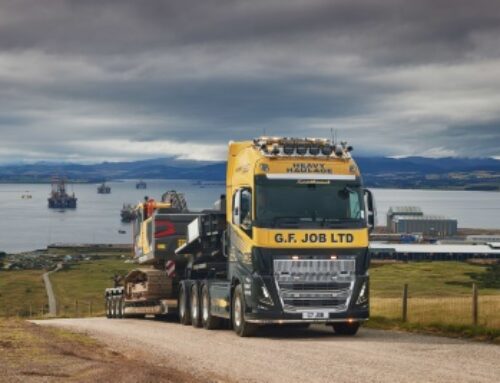Hydrogen combustion on the rise at IAA
Hydrogen is being developed as a combustion fuel for truck engines by several major players in the industry.
DAF showed its hydrogen-powered combustion truck, and Iveco’s engine supplier FPT an all-new 13-litre straight-six with hydrogen capability.
 But Cummins indicated just how easy it would be to convert existing vehicles to hydrogen power by showing a Mercedes Axor fitted with a hydrogen-burning 6.7-litre engine.
But Cummins indicated just how easy it would be to convert existing vehicles to hydrogen power by showing a Mercedes Axor fitted with a hydrogen-burning 6.7-litre engine.
Undertaken in the UK with the help of government funding, the conversion took just three months to engineer, and the truck retains the standard cooling system and driveline. Engine output is 290 hp with 1200 Nm of torque. Just 40 kg of hydrogen held in a tank built by Cummins subsidiary Nprox (acquired in 2020) gives a 500 km range, and there is no intrusion into the truck’s cargo space.
Cummins now offers ‘fuel-agnostic’ engine designs in 6.7, 8.5 – 10 and 15-litre sizes, suitable for diesel (including HVO), methane or hydrogen fuels. Each engine family uses a common cylinder block, but the specific fuels require unique cylinder-heads, pistons and accessory components. The gas engines use spark ignition.
Cummins is still researching service schedules for the hydrogen engine. It appears that spark-plug life will be shorter than for the equivalent methane engine, and a vacuum-based crankcase ventilation system recycles unburned ‘blow-by’ fuel back into the induction system to prevent a build-up of explosive gas. Unlike diesel, surplus hydrogen is not simply combined into the engine oil.
In a break with convention, Cummins is using a ‘pentroof’ combustion chamber of a layout more frequently found in petrol engines in its hydrogen units.
Air enters the combustion chamber at an oblique angle, and this promotes intake swirl around a horizontal axis, which prevents the light hydrogen gas from forming an undiluted pocket at the top of the combustion chamber.
In contrast, Mahle showed a hydrogen-specific piston that retained the conventional combustion bowl for use with a flat ‘heron’ head. While modern diesel engines use steel pistons, the lower peak cylinder pressures of a hydrogen engine allow the use of aluminium for this application.
Piston deformation is countered by a cast-iron carrier for the top ring, which also reduces wear between the lower part of the ring and the piston, and the ring itself is treated with ultra-hard DLC.
This is necessary because, in contrast to diesel, fast-burning hydrogen has no lubricating properties. Valves and valve seats on hydrogen engines are thus also more prone to wear and must be made from specific materials.
Mahle also showed an electrically-driven crankcase ventilation pump that diverts oil mist and unburned hydrogen back into the engine intake tract. Already in production, it pumps 400 litres of crankcase fumes per minute.












